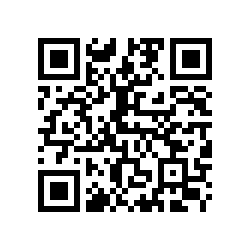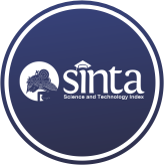Optimalisasi Analisis Keamanan Menggunakan Acunetix Vulnerability Pada Rekam Medis Elektronik
(1) Universitas Putra Indonesia “YPTK” Padang, Indonesia
(2) Universitas Putra Indonesia “YPTK” Padang, Indonesia
(3) Universitas Putra Indonesia “YPTK” Padang, Indonesia
(*) Corresponding Author
Abstract
Full Text:
PDFReferences
N. Albalawi, N. Alamrani, R. Aloufi, M. Albalawi, A. Aljaedi, and A. R. Alharbi, “The Reality of Internet Infrastructure and Services Defacement: A Second Look at Characterizing Web-Based Vulnerabilities,” Electron., vol. 12, no. 12, 2023, doi: 10.3390/electronics12122664.
F. M. Alotaibi and V. G. Vassilakis, “Toward an SDN-Based Web Application Firewall: Defending against SQL Injection Attacks,” Futur. Internet, vol. 15, no. 5, pp. 1–15, 2023, doi: 10.3390/fi15050170.
M. S. Aliero, I. Ghani, K. N. Qureshi, and M. F. Rohani, “An algorithm for detecting SQL injection vulnerability using black-box testing,” J. Ambient Intell. Humaniz. Comput., vol. 11, no. 1, pp. 249–266, 2020, doi: 10.1007/s12652-019-01235-z.
M. Indushree, M. Kaur, M. Raj, R. Shashidhara, and H. N. Lee, “Cross Channel Scripting and Code Injection Attacks on Web and Cloud-Based Applications: A Comprehensive Review,” Sensors, vol. 22, no. 5, pp. 1–20, 2022, doi: 10.3390/s22051959.
Menteri Kesehatan RI, Peraturan Menteri Kesehatan Republik Indonesia No 24 Tahun 2022 Tentang Rekam Medis, No 24 2023. Menteri Kesehatan RI, 2022. [Online]. Available: https://yankes.kemkes.go.id/unduhan/fileunduhan_1662611251_882318.pdf
Jarupunphol, P. Seatun, S. Buathong, and Wipawan, “Measuring Vulnerability Assessment Tools’ Performance on the University Web Application,” Pertanika J. Sci. Technol., vol. 31, no. 6, pp. 2973–2993, 2023, doi: 10.47836/pjst.31.6.19.
A. Zirwan, “Pengujian dan Analisis Kemanan Website Menggunakan Acunetix Vulnerability Scanner,” J. Inf. dan Teknol., vol. 4, no. 1, pp. 70–75, 2022, doi: 10.37034/jidt.v4i1.190.
Guntoro, C. Loneli, and M. Musfawati, “Analisis Keamanan Web Server Open Journal System (Ojs) Menggunakan Metode Issaf Dan Owasp (Studi Kasus Ojs Universitas Lancang Kuning),” JIPI (Jurnal Ilm. Penelit. dan Pembelajaran Inform., vol. 5, no. 1, p. 45, 2020, doi: 10.29100/jipi.v5i1.1565.
E. Listartha, G. Arna, J. Saskara, D. Gede, and S. Santyadiputra, “Vulnerability Testing and Security Penetration on Prodi XYZ Thesis Management Web Applications,” Sci. Comput. Sci. Informatics J., vol. 4, no. 2, pp. 1–14, 2021.
F. Al Fajar, “Analisis Keamanan Aplikasi Web Prodi Teknik Informatika Uika Menggunakan Acunetix Web Vulnerability,” Inova-Tif, vol. 3, no. 2, p. 110, 2020, doi: 10.32832/inova-tif.v3i2.4127.
F. Kristianto, S. Rahman, and S. Bahri, “Analisis Kerentanan Pada Website Servio Menggunakan Acunetix Web Vulnerability,” Jtriste, vol. 9, no. 1, pp. 46–55, 2022, doi: 10.55645/jtriste.v9i1.363.
S. Sandy and H. H. Solihin, “Audit Keamanan dan Manajemen Risiko pada e-Learning Universitas Sangga Buana,” J. Manaj. Inform., vol. 11, no. 1, pp. 1–14, 2021, doi: 10.34010/jamika.v11i1.3641.
DOI: https://doi.org/10.30645/kesatria.v5i4.494
DOI (PDF): https://doi.org/10.30645/kesatria.v5i4.494.g489
Refbacks
- There are currently no refbacks.
Published Papers Indexed/Abstracted By:














